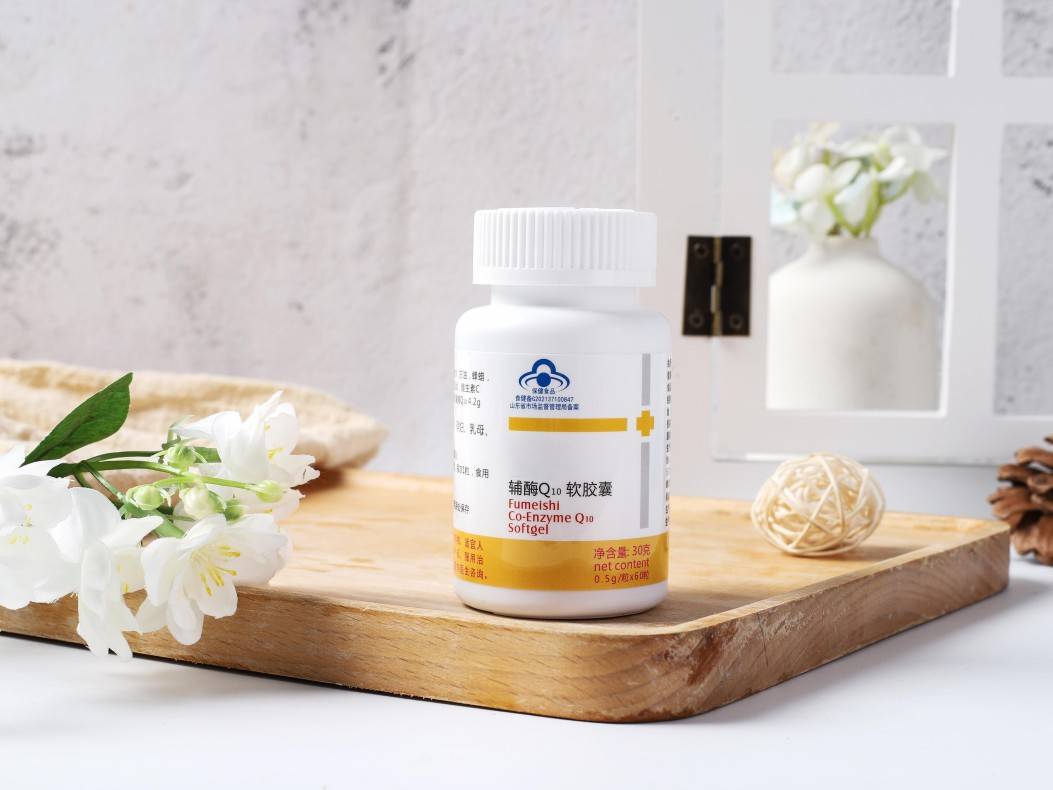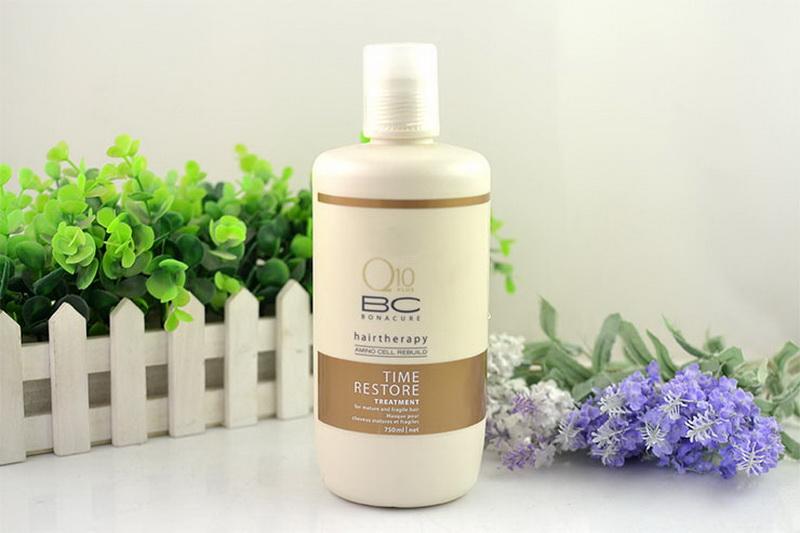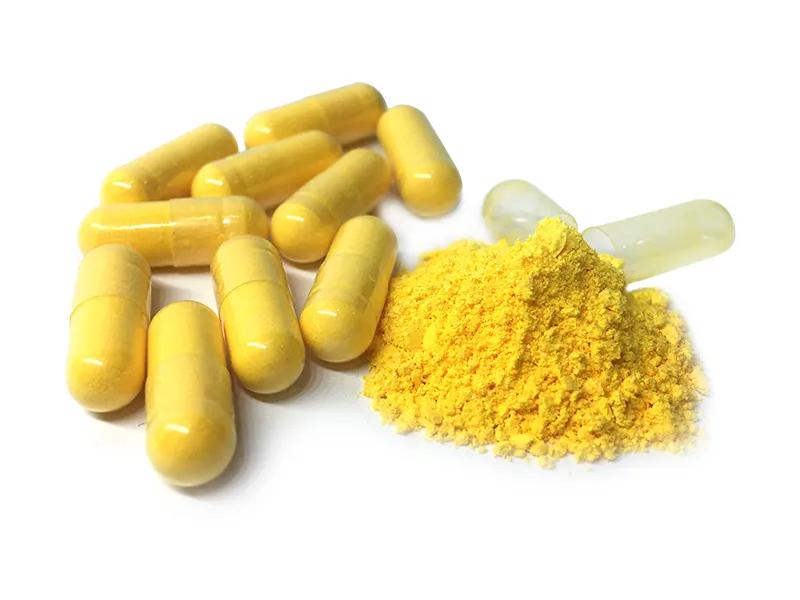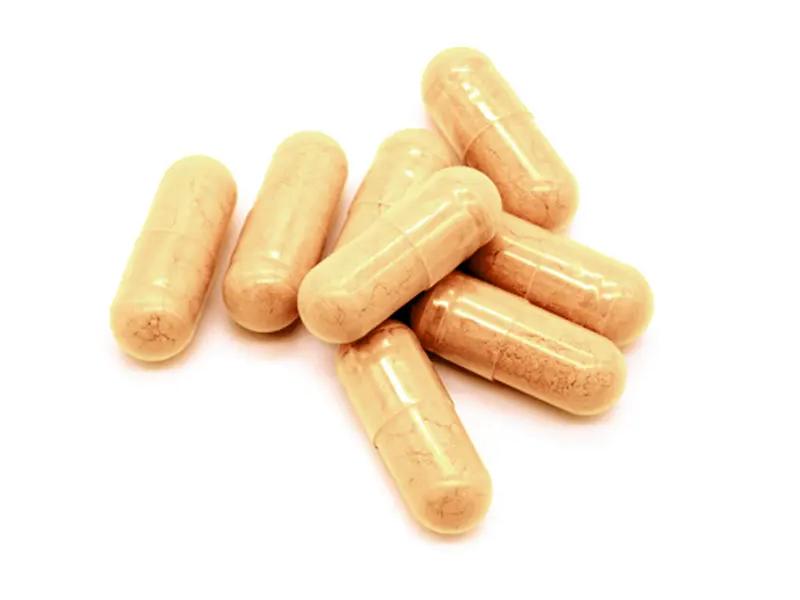Coenzyme Q10 What Does It Do?
Coenzyme Q10 (Co-Q10), also known as decenequinone or ubiquinone, is a fat-soluble quinone compound that is widely found in yeast, plant leaves seeds, and animal organs. It is mainly concentrated in tissues such as the liver, heart, kidneys, and adrenal glands, and is a natural antioxidant.
Ubiquinone can resist damage to the body caused by bacteria and free radicals, and promote cell growth and self-repair, thereby improving the immune system, enhancing antioxidant capacity, and delaying aging. Its quinone and side chain isopentenyl structure determines its characteristics as a respiratory chain hydrogen donor, cell metabolic activator, and important antioxidant[1].
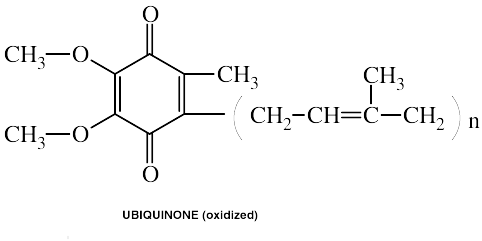
Coenzyme Q10 is notable for its safety in use, being non-toxic, non-teratogenic, and without significant side effects. Coenzyme Q10 is currently used widely as a multifunctional biochemical drug and food additive in the food, cosmetics, and pharmaceutical industries, and is popular with academics and consumers alike.
1. Physiological Function of Coenzyme Q10 In the Human Body
Coenzyme Q10 can provide or remove oxygen in living organisms and plays an important role in electron transport and proton transfer in the respiratory chain of the body. As a metabolic activator, it can activate cellular metabolism and respiration. It is a cofactor of several important enzymes in the mitochondrial oxidative phosphorylation reaction. It also acts as an important antioxidant in the body and a nonspecific immune enhancer. Co-Q10 also has the function of promoting the body's oxidative phosphorylation reaction and protecting the integrity of biological membranes.
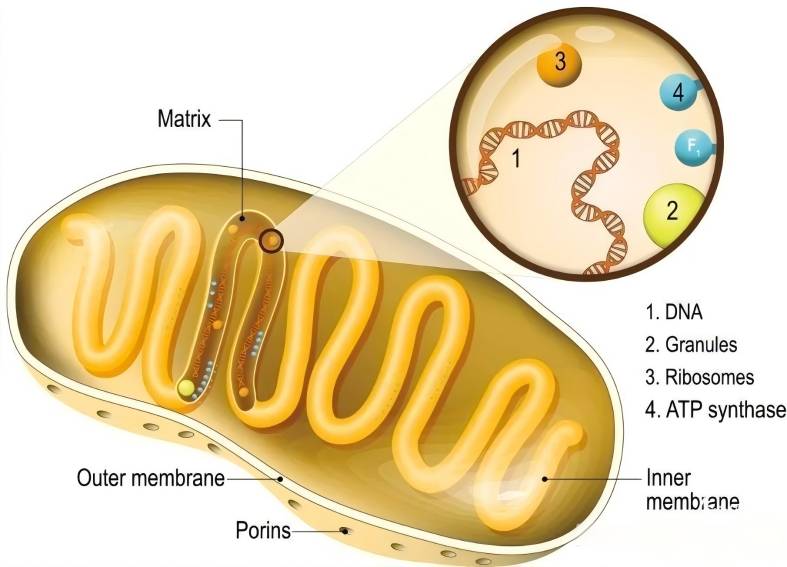
Co-Q10 is found on the inner membrane of the body's mitochondria. It is a key substance in the limiting reaction of the mitochondrial respiratory chain and an essential element in the production of cellular energy. It has the properties of an antioxidant and controls the flow of oxygen in the cell. It is a lipid antioxidant, free radical scavenger, and membrane stabilizer, as well as an activator of cellular metabolism [1].
2. The Antioxidant Effect of Coenzyme Q10
Coenzyme Q10 exists in two forms: oxidized (Co-Q10) and reduced (Co-Q10H2). It mostly exists in the form of Co-Q10, as Co-Q10H2 is easily oxidized. However, studies have found that only Co-Q10H2 has an antioxidant effect [2], which can reduce oxidative damage to lipids and proteins in the body by terminating the reaction of free radical chain reactions. Its antioxidant properties are mainly manifested in scavenging free radicals in the body, inhibiting atherosclerosis, and exerting antioxidant effects in synergy with other substances.
2.1 The Scavenging of Free Radicals by Coenzyme Q10
2.1.1 Reducing Oxidative Stress and Improving Mitochondrial Dysfunction
Oxidative stress and mitochondrial dysfunction are interrelated and can form a vicious circle. The mechanism is as follows: oxidative stress produces a large number of free radicals, which can damage mitochondrial complex I. When mitochondrial complex I is inhibited, more free radicals are produced [3]. Coenzyme Q10, an important antioxidant, and free radical scavenger, can reduce the harm caused by oxidative stress and improve mitochondrial dysfunction.
Othman [4] and others observed the effect of Coenzyme Q10 in treating oxidative stress induced by schistosomiasis in the liver and in assisting praziquantel in treating liver fibrosis. The results showed that after treatment with Coenzyme Q10 the liver's oxidative stress and liver function were improved, oxidative stress markers were significantly reduced, and the combination with praziquantel significantly improved the redox state in the liver and significantly inhibited liver fibrosis. This shows that maintaining the body's Co-Q10 levels at normal levels is very important for reducing oxidative stress protecting mitochondrial function and preventing its functional impairment.
2.1.2 Anti-apoptosis
Coenzyme Q10 can increase ATP production efficiency, inhibit the opening of the mitochondrial permeability transition channel and the depolarization of mitochondria, and directly scavenge free radicals and protect mitochondrial DNA, thereby preventing mitochondrial damage and free radical production, and playing a role in inhibiting apoptosis.
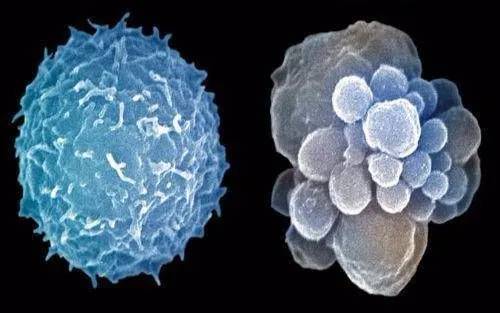
Li Xidong [5] studied the protective effect of CoQ10 on the damage to nigral cells in PD rats and found that the number of apoptotic nigral cells in the research group was significantly lower than that in the control group, indicating that CoQ10 can effectively prevent the damage to nigral cells in PD rats. Zhang Guoping et al. [6] studied the effect of CoQ10 on the apoptosis and proliferation of mouse brain microvascular endothelial cells cultured in vitro. The results showed that Co-Q10 at certain concentrations can inhibit the apoptosis of mouse microvascular endothelial cells, thereby protecting the microvascular endothelial cells.
2.1.3 Membrane Stabilizer
CoQ10 acts as an antioxidant, activator and hydrogen donor in the cells of living organisms, and can affect the activity of certain enzymes in living organisms, protect and restore the structure of biological membranes. Feng Qingzhi [7] studied the effect of VC and Co-Q10 before and after treatment the effect of ethanol on the ultrasonic parameters of the rabbit heart before and after treatment with VC and Co-Q10. The results showed that Co-Q10 can reduce toxic peroxides to non-toxic hydroxyl compounds, promote the decomposition of H2O2, thereby protecting the body from damage caused by toxic oxygen and maintaining the structural and functional integrity of the cell membrane.
2.1.4 Skin Repair
Coenzyme Q10 can increase the concentration of keratinocytes, improve the antioxidant capacity of skin cells, and inhibit the activity of phosphotyrosine aminase, thereby preventing the formation of melanin and preventing DNA damage to epidermal cells caused by ultraviolet radiation. It also has the effect of improving dull skin, reducing skin aging, and increasing skin moisture.
2.2 Coenzyme Q10 and Atherosclerosis
Atherosclerosis is the most common type of arteriosclerotic vascular disease. Oxidative modification of low-density lipoprotein (LDL) can lead to vascular endothelial dysfunction and the formation of foam cells, which are key to the initiation and development of atherosclerosis [8]. A large number of studies have shown that the plasma Co-Q10H2 content of atherosclerotic patients and people at high risk of atherosclerosis is lower than that of normal people [9], because Co-Q10 can significantly reduce or delay the oxidation of LDL.
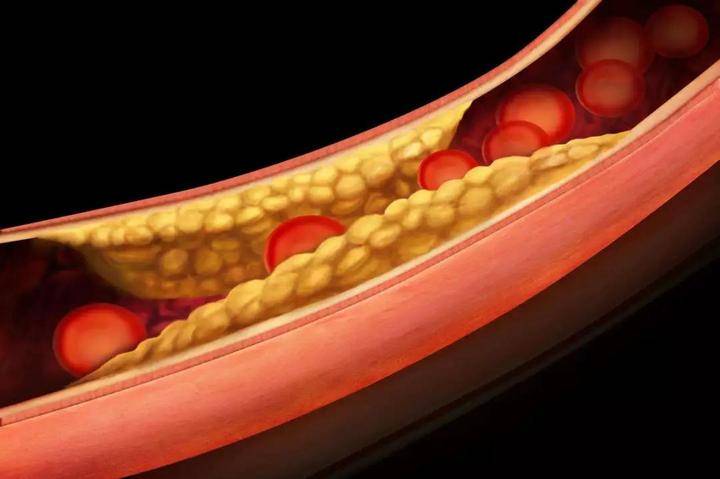
Its mechanism of action can be summarized as follows: Co-Q10 has a site-specific antioxidant effect, protecting both lipids and protein components. Co-Q10H2 has strong antioxidant capacity, which can efficiently terminate free radical chain reaction and inhibit the action of a variety of oxidative inducers, inhibiting LDL lipid peroxidation under different oxidative stress conditions (intense or milder), thereby inhibiting the formation and development of atherosclerosis [1, 8].
2.3 Synergistic effect of Co-Q10 and other substances
2.3.1 Coenzyme Q10's Synergistic Effect on VE
Most of the antioxidant substances that remove free radicals in the human body do not exist and act independently, but rather work together or synergistically. Coenzyme Q10, in addition to its own antioxidant effect, also has a synergistic effect with other antioxidants. VE is the main substance in the body that prevents lipid peroxidation, but under stress conditions, VE can actually accelerate the rate of lipid peroxidation. The presence of Coenzyme Q10 can promote the conversion of VE to a more stable state, thereby preventing the further oxidation of lipid substances and thus exerting an antioxidant effect in synergy with VE. Co-Q10 has a similar effect to VC in rejuvenating VE. It is the only naturally occurring fat-soluble antioxidant that can be regenerated (converted into an active form) in the human body [1].
2.3.2 Coenzyme Q10 and Ascorbic Acid
Ascorbic acid is a water-soluble antioxidant that can reduce α-tocopherol acyl radicals and prevent the initiation of chain reactions mediated by α-tocopherol hydroxyl radicals. It has been shown that VE can synergistically inhibit lipid peroxidation with ascorbic acid [10]. Based on the synergistic effect of Co-Q10 on VE, it is speculated that Co-Q10 may also interact with ascorbic acid.
2.3.3 Coenzyme Q10 and VB1, VB2
Co-Q10 and VB1 can be used together to improve left ventricular ejection fraction, cardiac function and exercise tolerance, and are used to treat chronic heart failure. Yu Juan et al. [11] studied the use of Co-Q10 in addition to conventional treatment in heart failure patients, and the results showed that the patients' left ventricular ejection fraction increased, and cardiac function and exercise tolerance also improved.
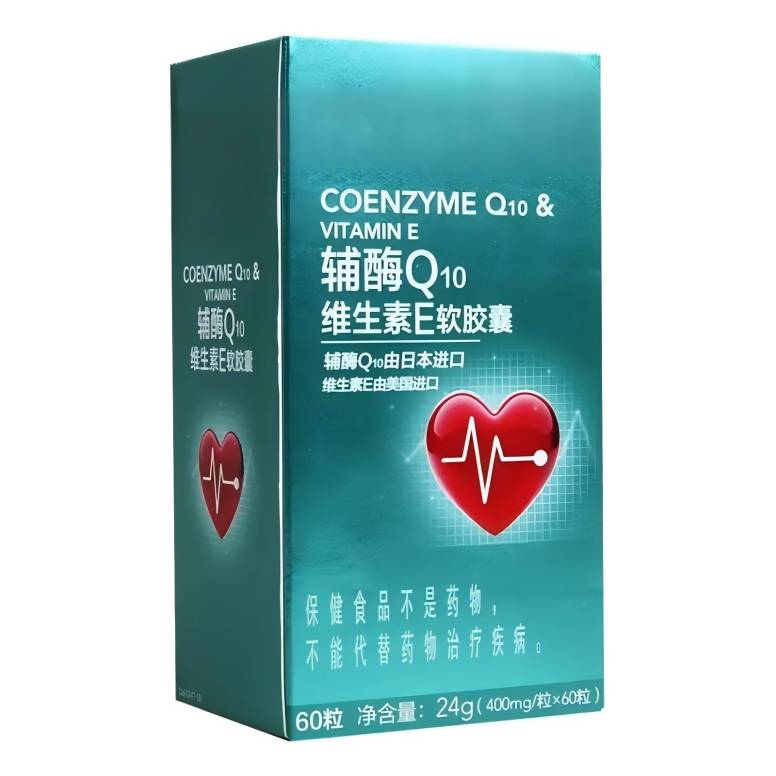
Co-Q10 and VB2 can be used together to effectively prevent migraine. Wang Yiping et al. [12] observed in the clinical efficacy of Co-Q10 and VB2 in preventing migraine attacks that the frequency of attacks in the treatment group was significantly lower than that in the control group, and the average headache intensity and duration in the treatment group were lower, indicating that Co-Q10 and VB2 have a good effect when used together to prevent migraine.
3. Application of Coenzyme Q10
3.1 In the Food Field
Coenzyme Q10 is stable, has no side effects, and is highly safe. It has been widely used as a food additive in recent years. Since the 1990s, when Japan first used Co-Q10 powder dissolved in a mixture of VE vegetable oil to extend the shelf life of products, the application of Co-Q10 in food has developed rapidly. It is widely used in Western countries to produce low-fat foods to increase the anti-obesity effect of the products. On September 25, 2006, China's State Food and Drug Administration issued the “Regulations on the Declaration and Review of Health Food Produced with Co-Q10 as Raw Material (Draft for Comment)”, and Co-Q10 gradually began to be used in health foods [13]. With the continuous development of new Co-Q10 products, its application in food and health products will become the main driving force behind the market demand for Co-Q10.
3.2 In Cosmetics
Coenzyme Q10 is a natural antioxidant with good anti-aging effects and has therefore been widely used in cosmetics in recent years. In recent years, the United States and Germany have launched new products such as Co-Q10-added shampoos for anti-aging and daily care of damaged hair [3]. In China, the variety and number of cosmetics containing Co-Q10 on the market is also increasing. 3.3
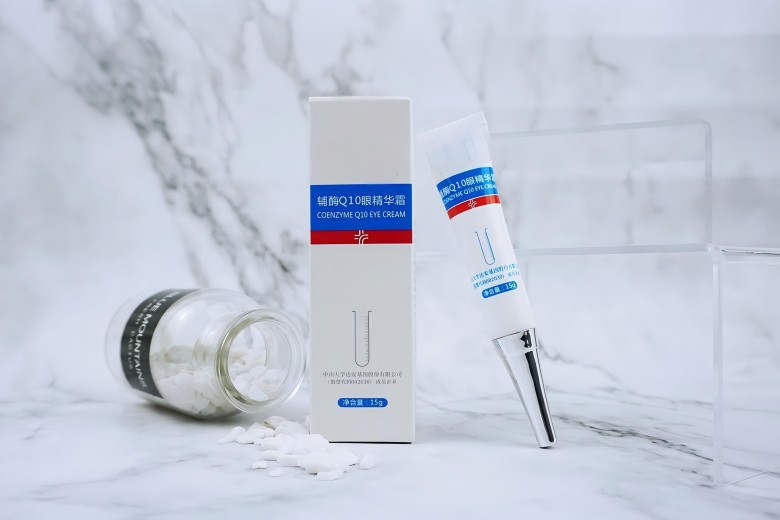
3.3 Medicine
Medicine is an important field of application for Co-Q10, which can be used as a treatment and adjuvant for some diseases. Studies have shown that a lack of Co-Q10 is associated with a variety of diseases in living organisms, such as non-specific immune diseases, periodontal disease, Parkinson's disease, Alzheimer's disease, chronic hepatitis, and kidney failure [14]. Co-Q10 can enhance the metabolic function of the heart muscle, protect the integrity of the cell membrane structure of cardiovascular cells, and alleviate atherosclerosis. It is now widely used as an adjuvant drug for cardiovascular diseases such as arrhythmia and heart failure. In addition, Co-Q10 can also affect the body's carbohydrate metabolic pathway, lowering blood sugar, and is currently a proven effective drug for the treatment of mitochondrial diabetes [15]. As research on Co-Q10 continues to deepen, its application in the pharmaceutical field will also expand, with broad application prospects.
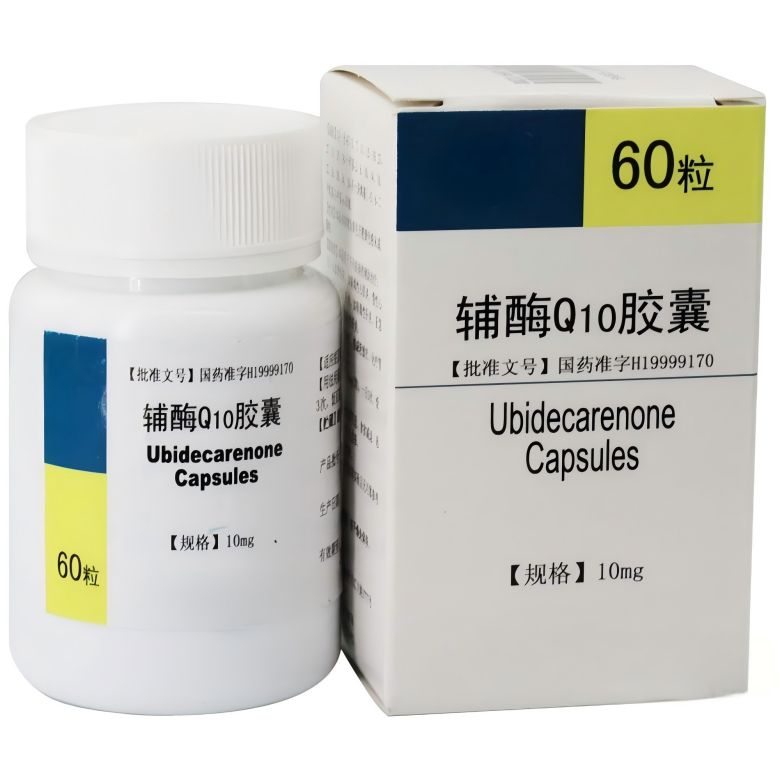
4. Current Research Status of Coenzyme Q10
Coenzyme Q10 consumption is mainly concentrated in the United States, Japan, Australia, and Western Europe. Japan is the world's leading producer of Co-Q10, with a market share of up to 90%. More than 100 patents for chemical synthesis and fermentation methods of Co-Q10 have been published. The US market accounts for 1/3 of total consumption, making it the Western country with the highest consumption of Co-Q10 after Japan.
5. Outlook
Coenzyme Q10 is widely used in the food, medical, and health care industries as an important enzyme for generating energy in cells and as a substrate for metabolic reactions. Currently, the international market demands more than 400 tons of Co-Q10 each year, and the demand is still growing at a rate of 10% per year [16]. As people continue to study and further develop Co-Q10, its scope of application will be further expanded and developed.
References:
[1] Wu ZF, Weng PF, Chen J. Research progress on the function of coenzyme Q10. Journal of Ningbo University (Science and Technology Edition), 2001, 14(2): 85-88
[2] Singh R, Shinde SN, Chopra RK, et al. Effect of coenzyme Q10 on experimental atherosclerosis and chemical composition and quality of atheroma in rabbits [J]. Atherosclerosis, 2000, 148(2):275-282
[3] Wang Wenhui, Wang Lihao, Guo Yongxin, et al. Research progress in the application of coenzyme Q10 [J]. Heilongjiang Agricultural Science, 2014(3):147-149
[4] Othman AA, Shoheib ZS, Abdel-Aleem GA, et al. Experimental schistosomal hepatitis: Protective effect of coenzyme Q10 against the state of oxidative stress [J]. Experimental Parasitology, 2008, 120
(2):147-155
[5] Li Xidong, Zhao Chunyu, Sui Rubo, et al. Effect of coenzyme Q10 on apoptosis of PC cells damaged by dopamine [J]. Chinese Clinical Rehabilitation, 2005, 9(45):42-43
[6] Zhang Guoping, Le Fei, Jin Huiming, et al. Effect of coenzyme Q10 on apoptosis and proliferation of mouse brain microvascular endothelial cells cultured in vitro [J]. Chinese Journal of Pathological Physiology, 2004, 20(1): 17-21
[7] Feng Qingzhi. The effect of vitamin C and coenzyme Q10 on the echocardiographic parameters of the rabbit heart before and after ethanol treatment [J]. Chinese Journal of Misdiagnosis, 2006, 6(5): 815-817
[8] Xiao Xincai, Feng Xiang, Su Yixiang. Research progress on the antioxidant effect of coenzyme Q10 [J]. Foreign Medical and Health Series, 2003, 30(4): 216-221
[9] Roy CN, Blemings KP, Deck KM, et al. Increased IRP1 and IRP2 RNA binding activity accompany a reduction of the labile iron pool in HFE-expressing cells[J]. Free Rad Biol Med, 2002,32 (2): 132-138
[10] Niki E. Mechanisms and dynamics of antioxidant action of ubiquinol[J]. Mol Aspects Med, 1997, 18(s1):63-70
[11] Yu Juan, Lv Huiping, Zhang Zufeng, et al. Efficacy of coenzyme Q10 and vitamin B1 in the treatment of chronic heart failure in the elderly[J]. Henan Medical Research, 2012, 21(2):177-178
[12] Wang Yiping. Clinical observation of the efficacy of coenzyme Q10 plus vitamin B2 in preventing migraine attacks [J]. Cerebrovascular Disease Prevention and Control, 2006, 6(3):173-174
[13] Ma Ju, Shi Ning. Research progress in the application of coenzyme Q10 in food [J]. Food Science and Technology, 2009, 34(2):18-21
[14] Wang Duoren. Development and application progress of coenzyme Q10 [J]. Beverage Industry, 2010,13(8): 8-16
[15] Wang Xi, Ren Yan. Research and clinical application of coenzyme Q10 in diabetes [J]. International Journal of Endocrinology and Metabolism, 2010(1):51-53
[16] Yang Zeyi. Coenzyme Q10—a new resource for human health foods [J]. Sports Science Research, 2007, 28(2):67-69


 English
English French
French Spanish
Spanish Russian
Russian Korean
Korean Japanese
Japanese